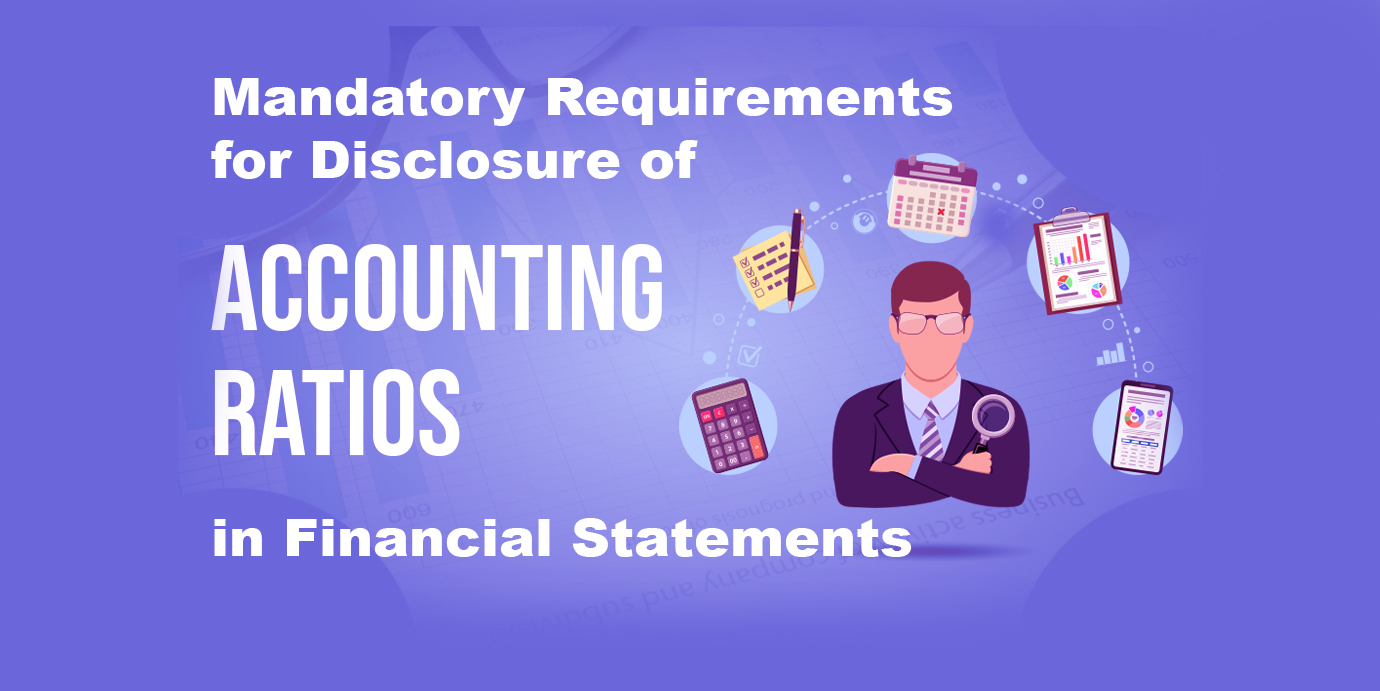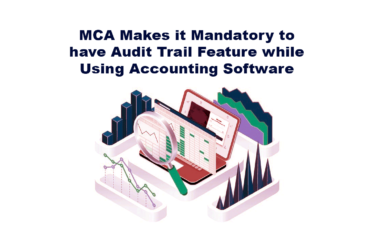To bring about greater transparency in the financial statements, an amendment to Schedule III to the Companies Act, 2013 was introduced by the MCA. Therein, several new disclosures that are grouped under “Additional Regulatory Information” (ARI) are mentioned. Disclosure of the following 11 key accounting ratios is amongst the few disclosures specified under ARI, and are mandatory to be provided in the Financial Statements:
- Current ratio
- Debt-equity ratio
- Debt service coverage ratio
- Return on equity ratio
- Inventory turnover ratio
- Trade receivables turnover ratio
- Trade payables turnover ratio
- Net capital turnover ratio
- Net profit ratio
- Return on capital employed
- Return on investment
Let us Look at the Formulas and the Interpretation of the Ratios:
Current Ratio
Current Assets / Current Liabilities
This ratio is mainly used to give an idea of the company’s ability to pay back its short-term liabilities (debt and payables) with its short-term assets (cash, inventory, receivables). The higher the current ratio, the more capable the company is of paying its obligations. A ratio under 1 suggests that the company would be unable to pay off its obligations if they are due at that point. An increase in the current ratio represents improvement in the liquidity position of the firm while a decrease in the current ratio represents that there has been a deterioration in the liquidity position of the firm.
Debt-Equity Ratio
Total Debt / Shareholder’s Equity
It is the ratio of Debt to equity. It indicates the relative uses of debt and equity as sources of capital to finance the company’s assets, evaluated using book values of the capital sources.
A high debt: equity generally means that a company has been aggressive in financing its growth with debt. If a lot of debt is used to finance increased operations (high debt to equity), the company could potentially generate more earnings than it would have without this outside financing. If this were to increase earnings by a greater amount than the debt cost (interest), then the shareholders benefit as more earnings are being spread amongst the same amount of shareholders.
Debt Service Coverage Ratio
Earnings Available for Debt services / Debt Services
It is the ratio of Interest to be paid to earning available before interest and TAX. It compares the earning available (to meet the interest obligation) with the interest obligation.
The lower the ratio, the more the company is burdened by debt expense. When a company’s interest coverage ratio is 1.5 or lower, its ability to meet interest expenses may be questionable. An interest coverage ratio below 1 indicates the company is not generating sufficient revenues to satisfy interest expenses.
Return on Equity Ratio
Net Income/ Average Shareholder’s Equity
This is a ratio that indicates the efficiency and profitability of a company’s capital investments. ROCE should always be higher than the rate at which the company borrows, otherwise any increase in borrowings will reduce shareholders’ earnings.
Inventory Turnover Ratio
Net annual Sales /Average Inventory
This ratio, also known as Stock Turnover Ratio establishes the relationship between the cost of goods sold during the period or sales during the period and average inventory held during the period. It measures the efficiency with which a Company utilizes or manages its inventory.
Trade Receivables Turnover Ratio
Net Annual Sales / Average Accounts Receivables
This is a ratio to measure how efficiently a firm uses its assets. A high ratio implies either that a company operates on a cash basis or that its extension of credit and collection of account receivables is efficient. A low ratio implies the company should re-assess its credit policies in order to ensure the timely collection of imparted credit that is not earning interest for the firm.
Trade Payables Turnover Ratio
Net Credit Purchase/ Average Accounts Payable
It indicates the number of times sundry creditors have been paid during a period. It is calculated to judge the requirements of cash for paying sundry creditors.
Net Capital Turnover Ratio
Net Annual Sales / Working Capital
This ratio indicates a company’s effectiveness in using its working capital.
Net Profit Ratio
PAT / Net Annual Sales
Net profit margin measures how much of each rupee earned by the company is translated into profits. A low profit margin indicates a low margin of safety: higher risk that a decline in sales will erase profits and result in a net loss.
Generally, e it is not possible to determine an ideal net profit margin figure. It varies from industry to industry. For example, a consumer good industry may have net profit margin of 15% as compared to the IT industry which can have net profit margin figure much higher than the other industries. But for any company higher net profit margin is always better.
Return On Capital Employed and Return on Investment (Share)
Return on Capital Employed is Earnings Before Interest & Taxes / Capital Employed
Return on Investment (Share) is Net Income / Cost of Investment
Return on capital employed indicates the ability of a company’s management to generate returns for both the debt holders and the equity holders. Higher the ratio, more efficiently is the capital being employed by the company to generate returns. Return on Investment is used to calculate the benefit the company will receive in relation to its (share) investments, the higher the ratio, the greater the benefit earned.
Together with the disclosure, an explanation with respect to change in such ratios by more than 25% (whether positive or negative) in comparison to the preceding year’s ratio, should also be provided.





